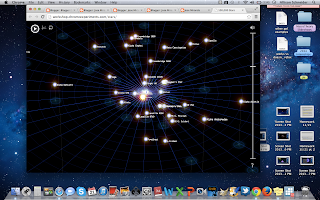Summarizing the Libraries and Museums Technology Charter
The Libraries and Museums Technology Working Group’s main goal is to maintain a digital library of information that its interactive and user friendly. One of the main features is to develop libraries and museums through a virtual world environment. The Library and Museums Technology working group is maintained and led by Jerome Yavarkovsky and Melissa Carrillo of the Smithsonian Latino Center.
We embark on a journey of digital age, where we learn the affects of the individual as a whole and the way it impacts how we consume data. Mr. Yavarkovsky and Ms. Carillo have built these libraries in order to shift into a more collaborative and multimedia experiences that are more user friendly and available for the public to use. In the last few decades technology has changed into a more interactive role and while the advancement of technology has changed the way we save and collect data our libraries have also become more methodical, they are also becoming more outdated.
The main goal of Libraries and Museums is to utilize virtual worlds and immersive education to change information and the way we collect data. This will bring us into a more advance way configure or information that this group hopes to acquire new individuals through the use gaming and 3D technology to present museum objects. These 3D museum artifacts and paintings are then linkable, and provide even more information, which opens up new resources and learning tools. This helps librarians who face an increasing challenge in the evolving digital sources they use and make available.
In a few decades this will become the way normal way of saving and collecting data for libraries and databases. This will forever change the way we look at information and also the way we learn new information. In the long run this will become the norm for students and professionals. The best part is that we are only beginning to uncover the possibilities of what this new technology can do. In the future more advancements in technology will lead to new breakthroughs in the field of immersive education.



















































